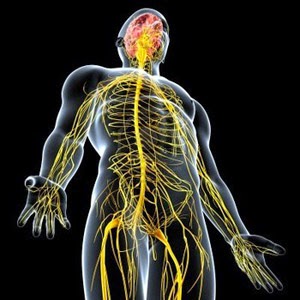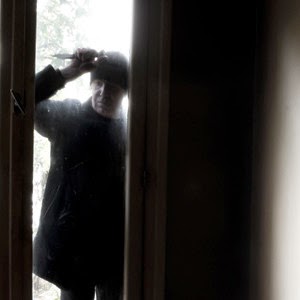This article is Part II of a III part series on the concealed carry weapon process. In this article we will be discussing 1) Selecting an instructor, 2) Selecting a firearm, 3) Clothing.
So you have decided you want to be able to legally carry a concealed firearm; this comes with a lot of responsibility and is not to be taken lightly. Be sure you take the required training seriously and invest some time in selecting an instructor.
I am going to give you some things to consider when making the decision to select an instructor. Make sure you are getting your money’s worth from an instructor who has real, verifiable experience related to carrying a firearm for his or her profession. In my opinion, your instructor should have military and or law enforcement experience. There is a big difference between an instructor who has had to carry a firearm for work in real world conditions and one who has not.
There is no substitute for experience — period. Law Enforcement personnel carry guns on their person when they are working and most carry firearms concealed when they are off duty. As a community they have the most real world ccw experience of any type of people you might come across. They are up to date on the newest types of firearms, training, ammo and equipment. You should want to take advantage of their experience to help you weed through what works and what doesn’t work.
An instructor who is prior law enforcement can also tell you what you could expect if you had to use your firearm to defend yourself. He or she may be able to give you some advice on how the process works and some of the do’s and don’ts.
Pick up the phone and ask to speak to the instructor who is teaching the course. Inquire as to his or her background. Ask the instructor if they have a ccw themselves. If the instructor does not have a ccw for the state he or she is teaching inquire as to why. How can an instructor teach a course on ccw if they themselves do not have one? If the instructor has a ccw ask him or her how long they have had it. Ask the instructor if he or she was prior military or law enforcement? Remember there is no substitute for experience.
Once you have selected your instructor complete the required training course and submit a copy of your certificate of completion to the sheriff’s department either through fax or email.
You may already have this part figured out. If not discuss it with your instructor so they can help guide you on your purchase or selection. I suggest if you are unsure that you go to a local gun range and try out a few different guns to see what works best for you. Keep in mind a couple of important factors: a.) in Orange County you can have a maximum of three firearms on your permit, b.) the firearms must be registered to you, c.) the sheriff’s department will check to see if the guns you list on your application are registered to you, if they are not you will not be able to add them to your permit, and d.) the firearm must not be altered from its original factory design — meaning you cannot change the internals of the firearm. For example, you cannot change or alter the trigger in any fashion such as installing an aftermarket trigger kit or having a gunsmith alter the factory components so that the trigger is lighter or smoother. You can change the cosmetics if you want such as the color, the sights, and/or the grips.
You may need to start wearing a light jacket or a button up shirt to help conceal the gun you are carrying. More than likely you will need to make some changes to your wardrobe. The last thing you want to happen to you is for you to accidently expose your gun while you are out in public. (I will be doing another article that will cover Unwarranted Detection.) Law enforcement officers know this inside and out as a result of experience. If you have an instructor who is prior law enforcement, be sure to ask for their advice on this subject.
In closing, remember to always store your firearm in a safe and lawful manner and always adhere to the terms and conditions of your permit. If you want to reach me directly feel free to contact me via email.
Author : Jason Granados
shootsafe@outlook.com
First Posted on Aegis Academy
So you have decided you want to be able to legally carry a concealed firearm; this comes with a lot of responsibility and is not to be taken lightly. Be sure you take the required training seriously and invest some time in selecting an instructor.
I am going to give you some things to consider when making the decision to select an instructor. Make sure you are getting your money’s worth from an instructor who has real, verifiable experience related to carrying a firearm for his or her profession. In my opinion, your instructor should have military and or law enforcement experience. There is a big difference between an instructor who has had to carry a firearm for work in real world conditions and one who has not.
There is no substitute for experience — period. Law Enforcement personnel carry guns on their person when they are working and most carry firearms concealed when they are off duty. As a community they have the most real world ccw experience of any type of people you might come across. They are up to date on the newest types of firearms, training, ammo and equipment. You should want to take advantage of their experience to help you weed through what works and what doesn’t work.
An instructor who is prior law enforcement can also tell you what you could expect if you had to use your firearm to defend yourself. He or she may be able to give you some advice on how the process works and some of the do’s and don’ts.
Pick up the phone and ask to speak to the instructor who is teaching the course. Inquire as to his or her background. Ask the instructor if they have a ccw themselves. If the instructor does not have a ccw for the state he or she is teaching inquire as to why. How can an instructor teach a course on ccw if they themselves do not have one? If the instructor has a ccw ask him or her how long they have had it. Ask the instructor if he or she was prior military or law enforcement? Remember there is no substitute for experience.
Once you have selected your instructor complete the required training course and submit a copy of your certificate of completion to the sheriff’s department either through fax or email.
Selecting a firearm:
You may already have this part figured out. If not discuss it with your instructor so they can help guide you on your purchase or selection. I suggest if you are unsure that you go to a local gun range and try out a few different guns to see what works best for you. Keep in mind a couple of important factors: a.) in Orange County you can have a maximum of three firearms on your permit, b.) the firearms must be registered to you, c.) the sheriff’s department will check to see if the guns you list on your application are registered to you, if they are not you will not be able to add them to your permit, and d.) the firearm must not be altered from its original factory design — meaning you cannot change the internals of the firearm. For example, you cannot change or alter the trigger in any fashion such as installing an aftermarket trigger kit or having a gunsmith alter the factory components so that the trigger is lighter or smoother. You can change the cosmetics if you want such as the color, the sights, and/or the grips.
Clothing:
You will have to decide how you are going to carry. Most people have no idea how this can affect their daily life until they try and leave the house carrying a concealed gun on their person. For example, if you are carrying a gun inside the waistband you may have to buy a pair of pants that is one size larger to make room for the gun. You will probably need to buy a sturdy belt that can support the weight of a gun.
You may need to start wearing a light jacket or a button up shirt to help conceal the gun you are carrying. More than likely you will need to make some changes to your wardrobe. The last thing you want to happen to you is for you to accidently expose your gun while you are out in public. (I will be doing another article that will cover Unwarranted Detection.) Law enforcement officers know this inside and out as a result of experience. If you have an instructor who is prior law enforcement, be sure to ask for their advice on this subject.
In closing, remember to always store your firearm in a safe and lawful manner and always adhere to the terms and conditions of your permit. If you want to reach me directly feel free to contact me via email.
Author : Jason Granados
shootsafe@outlook.com
First Posted on Aegis Academy







 The man pushed me into the corner of the table, while I yelled for help to anyone in the bar, while another Russian (the one that we had befriended throughout the night) stole my money and phone. Not a single bar patron looked our way — they were locals and knew better. My friend came out of the restroom only to be greeted by another Russian man in cohorts with this criminal scheme wielding a knife. He warned my friend not to interfere and that we would be able to leave soon. Sure enough, just as I thought that the physical violence was going to escalate to a point of serious injury, the older man stepped off of me and they fled the piano bar.
The man pushed me into the corner of the table, while I yelled for help to anyone in the bar, while another Russian (the one that we had befriended throughout the night) stole my money and phone. Not a single bar patron looked our way — they were locals and knew better. My friend came out of the restroom only to be greeted by another Russian man in cohorts with this criminal scheme wielding a knife. He warned my friend not to interfere and that we would be able to leave soon. Sure enough, just as I thought that the physical violence was going to escalate to a point of serious injury, the older man stepped off of me and they fled the piano bar.

 Learning to drive by having an instructor point out potholes in the road is a great analogy for that type of training. If you were only told where the potholes were, you would eventually learn to vary the speed, direction, and location of the vehicle to avoid them. Conversely, If you were programatically taught how to turn the wheel, use the gas pedal and position the car correctly in the lane, you would learn to avoid potholes much more quickly. The key thing to evaluate is the goals of the program by looking at how the concepts presented relate to the drills being shot, what specific portion of a complete program does this drill work on, and what is the final goal of following the program. If that is not laid out, to some extent, you are quite likely wasting your time and effort…
Learning to drive by having an instructor point out potholes in the road is a great analogy for that type of training. If you were only told where the potholes were, you would eventually learn to vary the speed, direction, and location of the vehicle to avoid them. Conversely, If you were programatically taught how to turn the wheel, use the gas pedal and position the car correctly in the lane, you would learn to avoid potholes much more quickly. The key thing to evaluate is the goals of the program by looking at how the concepts presented relate to the drills being shot, what specific portion of a complete program does this drill work on, and what is the final goal of following the program. If that is not laid out, to some extent, you are quite likely wasting your time and effort…
 While I understand the theory, unfortunately what these attitudes and policies actually produce is a society of victims. From an economic perspective, that upward pressure on the supply curve (supply of victims) places downward pressure on the price of crime, creating more incentive for criminals activity. The more victims in a given population, the more criminals that will be produced to accommodate them. Creating a system of dependence is exactly how third world politics is played, and it is sad to see the American political system following suit.
While I understand the theory, unfortunately what these attitudes and policies actually produce is a society of victims. From an economic perspective, that upward pressure on the supply curve (supply of victims) places downward pressure on the price of crime, creating more incentive for criminals activity. The more victims in a given population, the more criminals that will be produced to accommodate them. Creating a system of dependence is exactly how third world politics is played, and it is sad to see the American political system following suit.